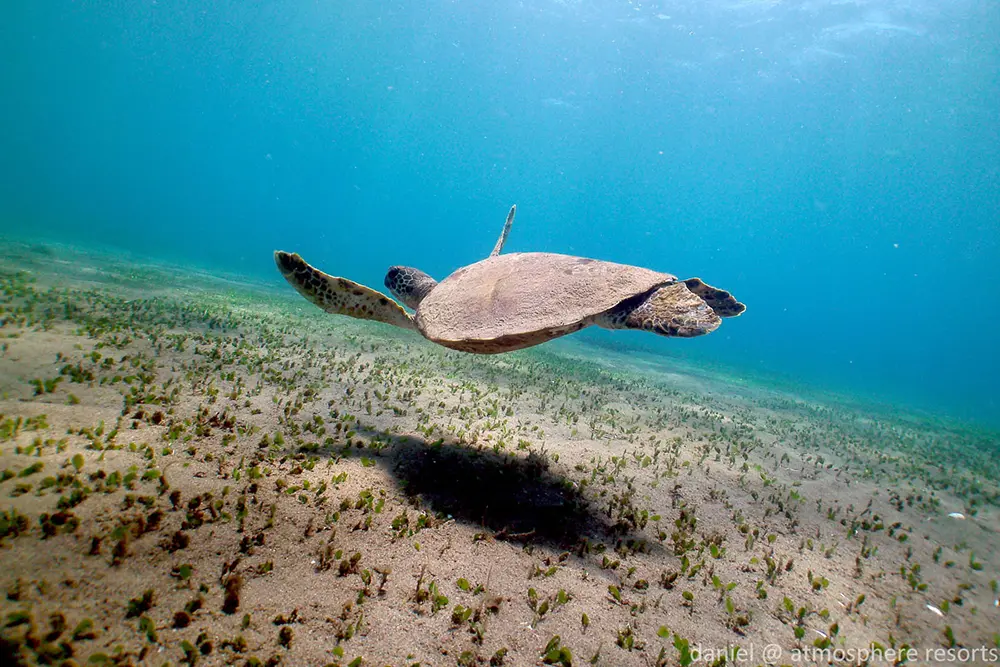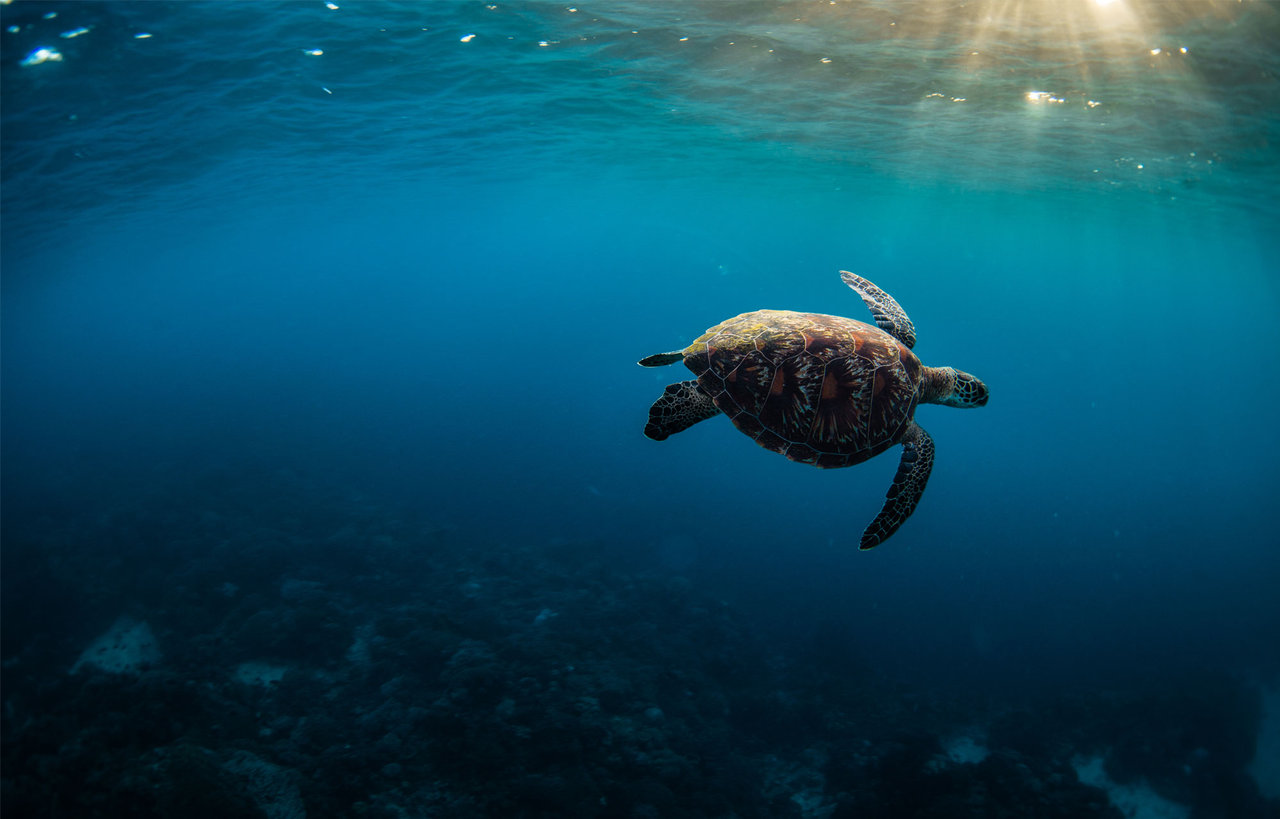Although the Dauin Coast is a must-visit place for muck divers (with sea turtles!), don’t forget about our little neighbor Apo Island. Besides the amazing coral and numerous fish, the usual favorites of our divers are the many sea turtles that make Apo Island their home. With no known predators in the area, many of them are not scared of us and sometimes even swim with us for a few minutes, as long as they are not busy taking a nap on the soft coral or having a midday snack. After seeing “Finding Nemo,” many people know a bit about turtles, but I bet you might not know some of these interesting facts.
- Sea turtles are one of the oldest creatures on earth. They have been around for 110 million years, with some estimates putting that number at 140 million years. This means they were here before some of the dinosaurs
- There are seven species of sea turtles. We routinely find two of them at Apo Island, the Green sea turtle and Hawksbill sea turtle, while three others occur rarely in the Philippines – Loggerhead sea turtle, Leatherback sea turtle, and a species that nested in Dauin last year, the Olive Ridley sea turtle.
- Each species of sea turtle has a different combination of number and pattern of scutes, or scales, on their shell, making it very easy to identify a turtle species if you have a photograph. Sometimes it is very obvious, like a hawksbill sea turtle that seems to have overlapping scutes.

- You can identify an individual sea turtle by the pattern of scales on the side of its face. Each sea turtle has scales that are different sizes and shapes, just like a fingerprint. Male and female sea turtles are hard to tell apart except for one defining feature – male sea turtles have gigantic tails, which house the reproductive organs, compared to the very tiny tails that females have.
- Depending on the species, sea turtles can lay up to 200 eggs at a time, although usually it is closer to 100. This is done by crawling onto the beach past the high tide line, usually at night. They dig many nests, returning about once a week about three to five times, depending on the species. Most males never go on land after they are born, living a life only in the ocean.
- A baby sea turtle, called a hatchling, relies on temperature to determine if it will be a male or a female. Depending on the species, there is a pivotal temperature that produces both males and females. Below this temperature, the eggs will be male, while above this temperature the eggs will be female. Since the eggs are at different depths and the turtles nest at different times, there should be a good distribution of males and females.
- Hatchlings have a special tooth called a caruncle which is used for breaking open the egg when they are ready to hatch. The hatchlings who are ready first will wait for their brothers and sisters, all emerging at the same time. Scientists believe this is an example of the predator-satiation theory. If all of the sea turtles emerge at once, the predators will eat a few and get their fill, leaving the rest to make it to the ocean. If they emerge a few at a time, then probably none of them will make it. Unfortunately, it is thought that roughly 0.1% of hatchlings survive to adulthood.

- Green sea turtles are sometimes green but are usually brown. They are named for the color of their meat since they used to be hunted for food, especially turtle soup.
- Leatherback sea turtles are the biggest of all sea turtles, with the largest on record growing up to 3m in length! They don’t have scales like the other sea turtles – they have thick skin, kind of like leather, that stretches over their body with tiny bone deposits, hence the name leatherback. They are the fastest moving reptile, clocked at up to 35 km/hr, and also the deepest diving turtle, down to depths of 1,280 meters. Believe it or not, their diet is almost entirely jellyfish. They even lay some ‘dummy’ eggs, eggs that are infertile and won’t hatch, in the nest above their fertile eggs. If a predator digs into the nest, they will potentially feed on these eggs and not reach the fertile eggs beneath them.
- Turtles can migrate thousands of miles to reach their nesting grounds. It is thought that they follow the earth’s magnetic forces to navigate the ocean. Some female sea turtles return to the same beach where they hatched, although this is becoming harder due to the increase in coastal construction, light pollution, and noise pollution.
- BONUS: a group of turtles is called a bale.
If you’ve never seen a sea turtle, definitely come join Atmosphere for a day trip to Apo Island. We see turtles nearly every dive and snorkel since the turtles here can be found anywhere from 1 meter to 30 meters. There’s something majestic about watching a sea turtle fly effortlessly through the water – come see for yourself!
Your marine biologist /Daniel
Why are there so many sea turtles in Apo Island?







